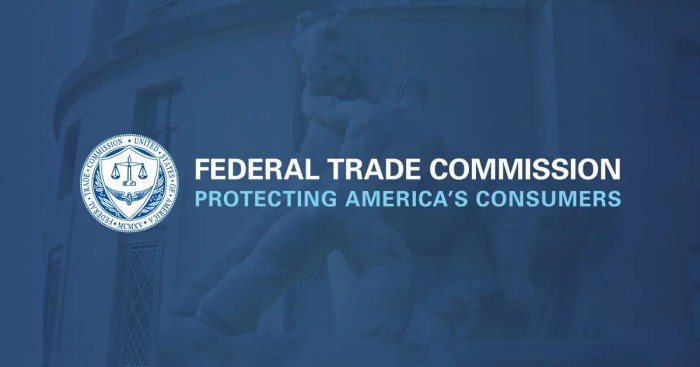Federal Trade Commission finds social and video streaming services pose serious privacy risks, highlighting a growing concern about the vast amounts of personal data these platforms collect and how it’s used. This investigation sheds light on the potential for data breaches and misuse, raising crucial questions about the safety of our online lives.
The FTC’s report delves into the specific practices employed by these services, revealing how they gather data about our online activity, browsing habits, and even our offline behavior. This information is then used for targeted advertising, content personalization, and even to influence our decisions.
The FTC’s Findings
The Federal Trade Commission (FTC) has issued a warning about the privacy risks posed by social media and video streaming services. The FTC’s investigation revealed that these platforms collect vast amounts of personal data, often without users’ full knowledge or consent.
This data collection, coupled with inadequate security measures, creates a significant vulnerability for users’ privacy.
Data Collection Practices
The FTC identified several data collection practices that pose privacy risks. These practices include:
- Collecting sensitive data, such as location, browsing history, and financial information, without clear disclosure or consent.
- Tracking users’ online activities across multiple websites and apps, even when they are not using the specific service.
- Sharing user data with third-party advertisers and data brokers without explicit permission.
- Using data collected for purposes other than those stated in the privacy policy, such as targeted advertising or profiling.
These practices can lead to various privacy violations, including:
- Data breaches, where sensitive information is stolen by hackers or malicious actors.
- Targeted advertising, where users are bombarded with ads based on their personal data, potentially leading to discrimination or manipulation.
- Profiling, where companies create detailed profiles of users based on their online behavior, which can be used for various purposes, including discriminatory lending or employment practices.
Examples of Data Misuse
The FTC provided several examples of how data collection practices can lead to privacy violations. For instance, a social media platform might collect location data from users, which could then be used to target them with location-based advertising or to track their movements.
Alternatively, a video streaming service might collect browsing history data, which could then be used to create a profile of the user’s interests and preferences, allowing the platform to target them with personalized recommendations or to sell their data to advertisers.
Security Measures
The FTC also found that many social media and video streaming services have inadequate security measures in place to protect user data from unauthorized access or breaches. This includes:
- Weak passwords and authentication systems, making it easier for hackers to gain access to user accounts.
- Lack of encryption, which leaves data vulnerable to interception and theft.
- Inadequate data retention policies, leading to the storage of sensitive data for longer than necessary.
These shortcomings can result in data breaches, where sensitive information is stolen by hackers or malicious actors.
Data Collection and Usage

Social media and video streaming services gather vast amounts of data about their users, creating detailed profiles that are used to personalize experiences and target advertising. While this data collection often occurs in the background, it raises significant privacy concerns, particularly as these platforms become increasingly intertwined with our daily lives.
Types of Data Collected
Social media and video streaming services collect a wide array of data, including:
- Personal Information:This includes basic details like name, email address, phone number, and date of birth.
- Location Data:Services track users’ physical location through GPS, Wi-Fi, and cellular networks.
- Device Information:This includes details about the user’s device, such as operating system, browser type, and device ID.
- Usage Data:This tracks how users interact with the platform, including content viewed, searches performed, and time spent on different features.
- Social Connections:Services collect information about users’ friends, followers, and social interactions.
- Biometric Data:Some platforms use facial recognition or voice recognition technology, collecting biometric data.
- Financial Information:Services may collect payment information for subscriptions or purchases.
Data Usage
The data collected by social media and video streaming services is used for a variety of purposes, including:
- Personalization:This data helps tailor content recommendations, advertising, and other features to individual user preferences.
- Targeted Advertising:Services use data to target ads to specific user demographics and interests.
- Content Improvement:Data about user engagement helps improve the quality and relevance of content.
- Research and Development:Services use data to analyze user behavior and develop new features.
- Fraud Prevention:Data can be used to identify and prevent fraudulent activity.
- Customer Support:Data can be used to provide personalized customer support.
Potential for Data Misuse
While data collection and usage can provide benefits, it also presents risks:
- Privacy Violations:Data misuse can lead to privacy violations, such as unauthorized access or disclosure of sensitive information.
- Discrimination:Data-driven algorithms can perpetuate biases and discrimination, leading to unfair treatment of certain groups.
- Manipulation:Data can be used to manipulate user behavior, such as through targeted advertising or the spread of misinformation.
- Surveillance:The collection of vast amounts of data raises concerns about government surveillance and the erosion of privacy.
User Privacy Concerns
The FTC’s findings highlight serious privacy concerns surrounding social and video streaming services. These platforms collect vast amounts of personal data about users, often without their full knowledge or consent. This data collection practices raise concerns about potential misuse, impacting user privacy and security.
Data Collection and Usage Practices
The FTC’s findings reveal a concerning pattern of excessive data collection and usage by these platforms. They gather information beyond what’s necessary for providing their services, often tracking user behavior across multiple platforms and devices. This includes:
- Collecting data about users’ browsing history, search queries, and online activities, even on websites and apps not directly related to the platform.
- Tracking user location data, even when the app is not in use.
- Collecting biometric data, such as facial recognition, without explicit consent.
- Sharing user data with third-party advertisers and data brokers, potentially leading to targeted advertising and privacy breaches.
Impact on Users
These data collection practices can have significant impacts on users, potentially leading to:
- Targeted advertising:Platforms use collected data to personalize advertisements, which can be intrusive and lead to the dissemination of misleading or harmful content.
- Privacy breaches:Data breaches can expose sensitive personal information to unauthorized access, leading to identity theft, financial fraud, and other security risks.
- Discrimination:The use of data to profile users can lead to discrimination based on race, gender, or other protected characteristics, impacting access to services and opportunities.
- Surveillance:The collection of location data and online activity can be used for surveillance purposes, potentially infringing on user privacy and freedom.
Potential Consequences of Data Misuse
The misuse of user data can have severe consequences, including:
- Reputation damage:The disclosure of personal information can damage users’ reputations and lead to social and professional consequences.
- Financial loss:Data breaches can result in identity theft, financial fraud, and other financial losses.
- Emotional distress:The misuse of personal data can cause emotional distress and anxiety, particularly in cases of harassment or stalking.
- Loss of control:Users may feel a loss of control over their personal information, leading to feelings of vulnerability and distrust.
Industry Practices and Regulations
The FTC’s findings highlight the need for a closer examination of the privacy practices employed by social and video streaming services. These platforms often collect vast amounts of user data, raising concerns about potential misuse and the effectiveness of existing regulations in protecting user privacy.
Comparison of Privacy Practices
Understanding the differences in privacy practices across various platforms is crucial for users to make informed decisions about their data. A comparison of privacy practices can shed light on the industry’s current landscape and identify areas where improvements are needed.
- Data Collection and Usage:Platforms vary significantly in the types of data they collect and how they use it. Some platforms collect detailed browsing history, location data, and even biometric information, while others focus on basic demographic information.
- Transparency and Control:The level of transparency and control users have over their data also varies. Some platforms provide detailed privacy policies and allow users to adjust their data settings, while others offer limited information and control options.
- Data Sharing and Third-Party Access:The extent to which platforms share user data with third parties also differs. Some platforms have clear policies about data sharing, while others engage in opaque practices that raise concerns about data security.
Effectiveness of Current Regulations
While regulations like the General Data Protection Regulation (GDPR) and the California Consumer Privacy Act (CCPA) have introduced important protections for user privacy, their effectiveness in addressing the specific challenges posed by social and video streaming services is debatable.
- Scope and Enforcement:Some argue that current regulations may not be sufficiently broad in scope to encompass the complex data practices of these platforms. Additionally, enforcement mechanisms may be inadequate to ensure compliance.
- Transparency and User Choice:While regulations often require companies to be transparent about their data practices, they may not always provide users with clear and understandable information about how their data is being used. Additionally, users may not have sufficient control over their data or the ability to easily opt out of data collection.
Check what professionals state about The Latest and Greatest Deals from Around the Web and its benefits for the industry.
- Data Security and Breach Notification:Regulations typically include provisions for data security and breach notification. However, the effectiveness of these provisions in preventing data breaches and ensuring prompt notification to users can vary.
Potential Solutions and Recommendations
Addressing the privacy risks associated with social and video streaming services requires a multi-faceted approach involving industry self-regulation, stronger government oversight, and increased user awareness.
- Enhanced Transparency and User Control:Platforms should provide users with clear and concise information about the types of data they collect, how it is used, and with whom it is shared. Users should have meaningful control over their data, including the ability to opt out of data collection and to easily access and delete their data.
- Standardized Data Privacy Practices:The industry should adopt standardized data privacy practices that ensure consistency across platforms and provide users with a predictable experience. This could include developing industry-wide guidelines for data collection, usage, and sharing.
- Strengthened Regulations and Enforcement:Governments should consider strengthening existing regulations to address the specific challenges posed by social and video streaming services. This could involve expanding the scope of regulations to encompass new data practices, enhancing enforcement mechanisms, and establishing clear penalties for violations.
- Increased User Awareness and Education:Users need to be educated about their privacy rights and the importance of protecting their personal information. This can be achieved through public awareness campaigns, educational materials, and online resources.
Consumer Awareness and Education

The FTC’s findings highlight the importance of consumer awareness and education regarding privacy risks associated with social and video streaming services. By understanding these risks and adopting proactive measures, consumers can safeguard their personal information and maintain control over their online privacy.
Protecting Privacy When Using Social and Video Streaming Services, Federal Trade Commission finds social and video streaming services pose serious privacy risks
Consumers can take several steps to protect their privacy while enjoying the benefits of these platforms. These steps involve being mindful of the data they share, understanding platform settings, and staying informed about evolving privacy practices.
Tips for Protecting Privacy
- Read Privacy Policies:Before signing up for any service, carefully review the privacy policy to understand how your data will be collected, used, and shared. Pay attention to sections about data retention, third-party sharing, and data security practices.
- Be Selective with Information Sharing:Only provide essential information when creating an account or filling out profiles. Avoid sharing sensitive data like financial information, medical records, or social security numbers unless absolutely necessary.
- Adjust Privacy Settings:Explore and customize privacy settings to control who can see your posts, access your data, and contact you. Limit the amount of personal information displayed on your profile and be cautious about sharing location data.
- Use Strong Passwords:Employ unique and strong passwords for each platform, and consider using a password manager to store and manage them securely.
- Be Mindful of Third-Party Apps:Exercise caution when granting access to third-party apps that connect to your social or streaming accounts. Review the app’s permissions and ensure you understand what data they are requesting.
- Limit Data Collection:Consider using privacy-focused browsers and extensions that block trackers and prevent websites from collecting your browsing history.
- Review and Delete Data:Regularly review your data stored on these platforms and delete any unnecessary information. You can often download a copy of your data to understand what is being collected.
Best Practices for Managing Privacy Settings
| Platform | Privacy Setting | Description ||—|—|—|| Facebook | Who can see my posts?| Choose between “Public,” “Friends,” “Only Me,” or a custom list of friends. || Instagram | Account Privacy| Control who can view your posts, stories, and direct messages. || YouTube | Ad Personalization| Opt out of personalized ads based on your viewing history.
|| Netflix | Account Privacy| Manage your viewing history, device access, and account sharing. || Amazon Prime Video | Watch History| View and delete your viewing history to prevent personalized recommendations. |
Staying Informed About Privacy Risks
- Follow Privacy Advocacy Groups:Stay informed about privacy news and updates by following organizations like the Electronic Frontier Foundation (EFF) and the American Civil Liberties Union (ACLU). These groups advocate for privacy rights and provide resources for consumers.
- Read Technology News:Stay updated on the latest privacy breaches, data security vulnerabilities, and emerging technologies that may impact your privacy.
- Attend Privacy Workshops:Participate in online or in-person workshops or webinars on privacy topics to gain practical skills and knowledge.
- Contact Customer Support:If you have concerns about a specific platform’s privacy practices, reach out to their customer support team for clarification or assistance.
Ending Remarks: Federal Trade Commission Finds Social And Video Streaming Services Pose Serious Privacy Risks
The FTC’s findings serve as a wake-up call, urging users to be more aware of their privacy settings and the potential risks associated with social and video streaming services. By understanding how these platforms operate and taking proactive steps to protect our data, we can navigate the digital landscape with greater confidence and control.
FAQ Insights
What are some examples of data collected by social and video streaming services?
Social and video streaming services collect a wide range of data, including your name, email address, location, browsing history, search queries, device information, and even your social connections.
How can I protect my privacy while using these services?
You can protect your privacy by carefully reviewing and adjusting your privacy settings, limiting the amount of personal information you share, and being cautious about what you post online.
What are some tips for managing privacy settings on social and video streaming services?
Read the privacy policies carefully, opt out of targeted advertising, limit the information you share on your profile, and consider using a privacy-focused browser or VPN.
What are some examples of how social and video streaming services misuse data?
Data misuse can include selling your information to advertisers, sharing it with third-party companies, using it to create targeted profiles, or even exploiting it for personal gain.
 CentralPoint Latest News
CentralPoint Latest News




